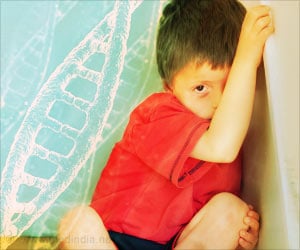The study was done to develop a screening tool to identify infants prior to 12 months at risk for autism spectrum disorder (ASD) and developmental learning delay (DLD) and provide immediate determination of risk for ASD.

The researchers took a novel approach to screening infants for ASD based on recognized neurodevelopmental disturbances, earlier research findings, and the overlooked but critical role of motor proficiency and neuromotor development in ASD. A total of 1024 typically developing infants were enrolled on to the assessment by 9 months, with 14 identified as at risk of ASD and 33 for DLD. An abrupt head circumference acceleration and the absence of head tilt reflex by 9 months were used as biomarkers to identify infants at risk. The study demonstrates a fresh, efficient, and easy means to identify infants at risk for ASD and DLD as early as 9 months of age in a low-risk population of infants, regardless of their primary. language, parental literacy, or socioeconomic status.
Abstract
Studies have shown an increased head circumference and the absence of the head tilt reflex as possible risk factors for autism spectrum disorder, allowing for early detection at 12 months in typically developing population of infants. Our aim was to develop a screening tool to identify infants prior to 12 months at risk for autism spectrum disorder and developmental learning delay, not affected by literacy or primary parental language, and provide immediate determination of risk for autism spectrum disorder. An abrupt head circumference acceleration and the absence of head tilt reflex by 9 months were used to identify infants at risk for autism spectrum disorder. Stability of early findings was then investigated when compared to comprehensive standardized neurodevelopmental assessment results and complete neurological and genetics evaluations.
A total of 1024 typically developing infants were enrolled by 9 months, with 14 identified as at risk for autism spectrum disorder and 33 for developmental learning delay. There was a good positive predictive value for the identification of autism spectrum disorder prior to 12 months. This study demonstrates an efficient means to identify infants at risk for autism spectrum disorder by 9 months of age and serves to alert primary care providers of infants who are vulnerable for autism spectrum disorder before symptoms are discernible by clinical judgment of primary care providers, parental concerns, or by screening questionnaires.
Source-Eurekalert
 MEDINDIA
MEDINDIA



 Email
Email








